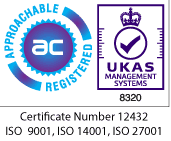The Role of Climate Tech in Decarbonising the Public Sector
In their 2020 report, the Climate Change Committee emphasised the importance of local authorities in national decarbonisation efforts and the UK’s journey to net zero. Quoting the capacity to impact roughly one third of UK emissions, the report highlighted the significant remit of local authorities, including local transport, social housing, and waste, as well as their influence over local businesses and communities.
Unlike private entities and businesses – which also contribute significantly to UK emissions yet often exhibit limited willingness to respond* – local authorities have demonstrated a clear commitment to addressing climate change. Out of 394 local authorities, 327 have declared a climate emergency, with 114 setting net-zero targets and 280 developing actionable plans.
This highlights the readiness of local authorities to act; however, translating this enthusiasm into meaningful outcomes requires clearer direction and support from central government. While the new government has shown a willingness to address these challenges, the reality is that news policies and funding mechanisms take time to develop and implement. Bridging this gap between ambition and action will be crucial to unlocking the full potential of local authorities in driving the UK’s net-zero agenda.
One stand-out and wide-reaching solution to this is climate technology. With the ability to process data more effectively, identify problems faster, and test solutions virtually, technology provides an efficient, transformative vessel for decarbonisation and net zero strategies. In a recent survey, 40% of senior executives said they believe that digital technologies are already having a positive impact on their sustainability goals. And, with the ability to initiate significant carbon reductions across energy, materials, and mobility, and save money at the same time, climate tech has the potential to provide the public sector with the resources it needs toward net zero.
*According to a recent analysis of the FTSE 250 conducted by our sustainability sister-company, edenseven, 41% of the FTSE 250 do not have a net zero target, and those who do have delayed it by an average of 13 months.
Climate Technology
According to a study by ICG, decarbonisation is accelerated in heavily digital economies, but with no risk or loss to finances. Between 2003 and 2019, the most digitalised economies in the EU reduced their greenhouse gases (GHGs) by 25%, while continuing to grow their economies by 30%. For comparison, the least digital economies reduced their GHGs by only 18%, and grew their economies by the same amount.
Climate technology can be categorised under three main areas:
- Decision Making Technologies (such as Digital Twin, Artificial Intelligence, and Machine Learning)
- Enabling Technologies (Cloud, 5G, Blockchain, Augmented/Virtual Reality, etc.)
- And Sensing & Control Technologies (eg. Internet of Things, Drones & Imaging, and Automation & Robotics)
In this article, we will discuss how each technology can be, and is being, specifically applied to climate strategies, and ultimately how these practices can be leveraged to benefit the Public Sector.
Enabling Technologies
By increasing efficiency, Enabling Technologies have the potential to accelerate decarbonisation with specific applications in the energy sector. For example, in a study by the World Economic Forum which placed the impact of digital technologies at a reduction of 8% on GHGs by 2050, they named 5G as a boost to energy efficiency in highly networked environments.
Similarly, blockchain technologies promote circularity, transparency, and security, all of which can be used to track carbon emissions within an organisation. This is particularly unique for its ability to measure Scope 3 emissions including the supply chain, which are notoriously difficult to monitor as they are indirect emissions, as opposed to Scopes 1 and 2 which are associated directly with an organisation’s operations.
Cloud technology also has numerous applications in climate endeavours, including grid management, smart meters, asset planning tools, solar propensity modelling, and methane tracking.
Sensing Technologies
Sensing technologies such as Internet of Things (IoT)-enabled sensors, imaging, and geolocation have the capacity to support climate strategies through their ability to gather real-time data and drive decision-making. Specifically, this has applications in the transport industry, improving route optimisation and decreasing emissions across both rail and road.
Decision Making Technologies
As useful and beneficial as all of these technologies are for accelerating sustainability strategies, their efficacy is predicated on beginning with a strong foundation. One particularly prevalent technology which can provide this comes in the form of the decision-making technology, Artificial Intelligence (AI).
According to a collaborative study by the World Economic Forum and Accenture, AI alone has the potential the reduce global GHG emissions by 4% by 2030. Even greater, CapGemini places the figure at 16% for AI’s climate potential across multiple sectors.
This is due to the substantial boost in efficiency that AI provides when integrated into a business or organisation. This is universal regardless of sector or industry, however it poses the most significant environmental benefit to energy-intensive systems, allowing them to limit their emissions by reducing the energy required to complete their operations.
The most pressing example of this is the manufacturing industry, which can employ AI in order to propel the efficacy of their process optimisation and model production lines, as well as using Machine Learning (ML) to streamline demand forecasting.
However, the efficacy of AI, ML, and other decision-making technology depends upon robust data. Between identifying and tracing source materials, optimising routes, and enhancing efficiency, access to clear and solid data is crucial for building streamlined solutions and a direct path to net zero.
Though not wholly reliant on AI, one example of this data-intuiting technology is cero.earth, the in-house carbon accounting and management platform from edenseven which is been funded by InnovateUK as one of their seven flagship ‘net zero living programmes’. Dynamic and intuitive, and designed to work specifically in the public sector, cero.earth gathers holistic data across all three Scopes of emissions in order to provide an organisation with actionable outcomes to propel them toward net zero. This provides the entity with the ability to track their progress and easily report developments to stakeholders, providing complete control over their climate journey. Thus, cero.earth is the optimal starting point for organisations to understand their current position, future opportunities, and roadmap to net zero.
Decarbonising the Public Sector
Through the combined benefits outlined in this article of transparency, efficiency, and clarity, climate technology has the potential to provide the direction toward net zero that the public sector could benefit from. In particular, climate tech has attractive applications across major emission areas including transport, waste, and infrastructure:
- Transport: As well as the aforementioned ability of sensing technologies to benefit route optimisation in local rail and road networks, there are already numerous examples of transport technology with sustainable benefits such as electric vehicle charging and energy management.
- Buildings: In buildings, it is easy to initiate decarbonisation through better controls such as thermostats, air quality monitoring, and smart parking.
- Waste: Forecasting technologies like AI and ML can support public sector bodies to reduce waste by providing an overview of resources and accurately projecting their usage.
Furthermore, technology can improve the energy efficiency of other public sector organisations such as healthcare. In a survey conducted by Bain & Company, healthcare companies were asked which technological application they had trialled in the previous three years (as of 2022). Innovative solutions included the use of big data to improve medical R&D, digital interfaces for electronic records and telecare, and integrating centralised information on healthcare providers, drugs, and treatments. All of these improve efficiency, and ergo reduce emissions.
The Responsibility of the Public Sector
The public sector also has a part to play itself in improving access and innovation to these technologies, in order to increase their availability and applications to its industries and operations. The World Economic Forum highlighted three ways in which the public sector can bolster climate investment, namely the use of incentives to drive activity from technology suppliers and financial investors; create longer-term certainty through regulatory support, providing security for technology companies to develop their solutions; and set better standards to credentialise green products and services.
These objectives are particularly prescient for those technologies which present a double-edged sword to sustainable initiatives. For example, though Enabling Technologies such as data centres, as explained earlier in this article, have the potential to boost efficiency within highly networked areas of the public sector, they also come with their own climate considerations. As of 2022, data centres account for 1% of the world’s electricity consumption, and 0.5% of CO2 emissions, figures which are more concentrated when analysing Europe in isolation, where a 2020 EU Commission Study revealed that data centres use 2.7% of the continent’s electricity demand, expected to reach 3.2% by the end of 2030 if they continue at the current rate.
This is not the end of the story, however, as technological innovations are being accelerated to offset this carbon contribution. Namely, the replacement of liquid cooling with air cooling provides a much more sustainable alternative to maintaining the efficiency of data centres, which relies on them not overheating. Air cooling leverages variable-speed fans which can run at reduced speeds to match a reduced cooling requirement; paired with strategic containment, this can create ‘hot’ and ‘cold’ aisles that produce a tailored thermal profile and ensure efficient cooling.
Though the growth and application of technologies such as these is largely dependent on bigger organisations, the public sector can still play its part by spurring and motivating the momentum of their development.
Financial Benefits to the Public Sector
The public sector itself also has numerous financial benefits to expect from increased sustainable investment, particularly in climate tech. As aforementioned, a study by ICG revealed that digital economies are able to reduce their GHGs by 25%, while increasing their economies by 30%. A report from the Institute of Local Government provided insight into these benefits, highlighting the role of technology as a crucial component:
- Energy Efficiency: The Institute listed the replacement of outdated lighting fixtures in streetlights with more energy efficient LED bulbs as a quick way to save money, as well as improving street safety. This is heightened in combination with sensing technologies, such as motion detectors and dimmers. The City of Sacramento, for example, has been able to save an average of $302,800 annually through this change.
- Transportation: Encouraging and facilitating the use of sustainable transport options comes with the economic benefits of conserving fuel and cutting fuel costs, reducing the health impacts of air and water pollution – and ergo saving on healthcare costs – and reducing traffic congestion, making streets safer for pedestrians and transit users alike.
Overall, increasing efficiency and sustainability through climate tech means that less funding has to be allocated to considerations such as the cost of water, energy, and infrastructure development and maintenance. These savings can then be reinvested into more targeted initiatives which in themselves can spur economic and environmental development, as well as increasing financial stability.
An increased priority and emphasis on sustainability also has the economic benefit of producing green jobs. Defined as any job which ‘contribute[s] to preserving or restoring the environment and our planet’, green jobs go hand-in-hand with the introduction of climate tech, including environmental technicians, wind turbine or solar panel technicians, green construction managers, and nuclear engineers, to name a few.
The Role of Cities
In particular, cities are public sector bodies equipped with the potential to create an immense environmental impact. In a TedTalk from Marvin Rees, on the Board of Directors for Cambridge Management Consulting, he explains that, despite occupying less than 3% of the earth’s land surface, cities are home to around 55% of the world’s population, are responsible for around 75% of CO2 emissions, as well as being prodigious emitters of nitrogen dioxide and methane, and consume 80% of the world’s energy.
However, Marvin explains, due to their reach, size, density, close proximity to leadership, adaptability, and capacity for reinvention, they have a vast capacity to manage those statistics. Attributing much of this potential directly to technological innovation, Marvin lists several of the technologies outlined in this article as being particularly accessible to cities: their population density makes public transport more accessible and cost effective, renewable investment is more financially attractive in large-scale markets, and the heightened presence of a circular economy brings greater benefits to waste management and recycling, in which goods are reused, and unavoidable waste such as food waste can be processed, for example as fertiliser.
Providing inspiration from a global perspective, Marvin names technological examples from around the world:
- Malmö: Malmö has developed a heat network that is fed by heat generated by processed waste; they intend to be 100% powered by renewable or recycled heat by 2030.
- Oslo: Oslo is subsidising electric vehicles and charging points, as well as introducing a circular waste management system and the purchase of a biogas plant.
- Bogota: Bogota has introduced a bus rapid transit system and have one of the largest fleets of electric buses in Latin America.
Innovations such as these are especially concentrated in Smart Cities, defined as cities which leverage information and communication technology to improve operational efficiency with the twin aims of improving economic growth and quality of life. As such, one of their most prescient objectives is environmental and sustainable development.
Conclusion
As this article has outlined, the only thing decelerating the public sector on its journey to net zero is a lack of direction, clarity, and security – technology has the potential to bridge this gap by providing transparency and efficiency. Through the differing and wide-reaching applications of foundational, decision making, enabling, and sensing and control technologies, the public sector can decarbonise across numerous emission-contributing factors. While it is worth noting that the technologies listed throughout this article do not in themselves offer a one-size-fits-all approach, their numerous benefits and uses at least contribute greatly to developing the framework for a coordinated approach.
Furthermore, they also possess incredibly financial and economic benefits to public sector entities, increasing employment through the availability of green jobs, as well as saving money through efficiency which can be reallocated to other initiatives.
For more information on the power of climate technologies such as cero.earth, visit the website for our sister-company, edenseven, here: https://www.edenseven.co.uk/cero-earth
For guidance on how to navigate the public sector, contact Craig Cheney, Managing Partner, here:
https://www.cambridgemc.com/people/craig-cheney
Contact - AI at the Edge article
Subscribe to our Newsletter
Blog Subscribe
SHARE CONTENT














